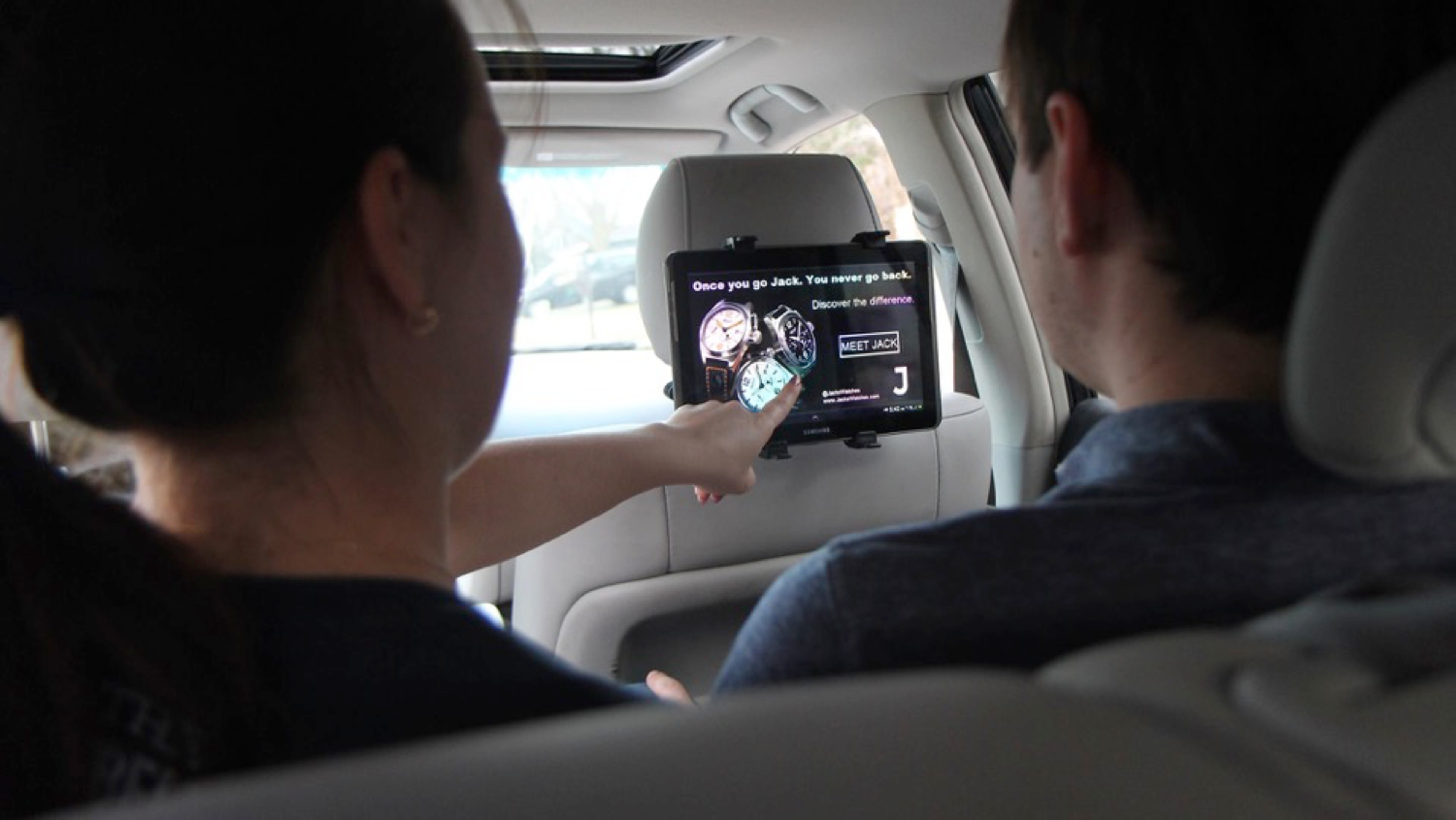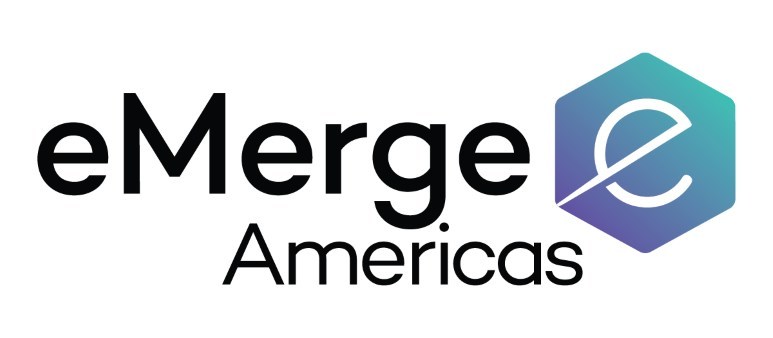This article was originally published by Rob Flessner on Medium on November 4th, 2016. Link to the article is here.
Earlier this year my startup, Vugo, completed it’s initial beta. It’s now gearing up for its rollout to literally thousands of rideshare vehicles. During our beta, we tested on tens of thousands of trips in rideshares like Uber, Lyft, and others. While that is nowhere near the reported 2,000,000+ rides completed by Uber alone on a daily basis, it’s still enough data to get excited about the future.
Vugo’s Mobility Media™ platform places digital media in rideshares using available data about each trip. This allows Vugo’s patent-pending TripIntent® algorithms to benefit passengers and enhance the emerging passenger entertainment experience. It also means that Vugo has a different set of data than rideshare companies — it has data on how passengers actually engage with media inside vehicles. With each trip, we learn more and TripIntent® keeps getting better. With fully autonomous vehicles just around the corner, that’s a big deal.

Ford’s in car entertainment projector from its patent.
Even Google’s Director of Self-Driving Cars, Chris Urmson, has hinted that self-driving cars are really just entertainment rooms on wheels. One prediction is that streaming television will replace the radio in the car now that cars outpace smart phones for net new cell plans. Ford has even gone as far as to patent an idea that projectors will be used to show movies in self-driving cars. While we don’t quite share the same (uninspired) vision as Ford, their head is in the right place. We are shifting away from a driving experience towards a passenger experience more than ever before. That shift is why startups like Vugo matter, and why you should care about their success. Otherwise, you might end up with the universally despised TaxiTVin your self-driving car. Some people might be scratching their heads thinking “but I’d just buy the self-driving car with a great passenger experience in it already.” It’s a good thought, but the reality is you probably won’t want or need to buy a self-driving car, and it certainly won’t be manufactured by Silicon Valley tech companies either (with the exception of Tesla). So it’s actually a pretty big deal.
Now, on to the data (that we’ll share)…

Map depicting density of trips during Vugo’s beta, the darker the blue the more trips taken.
Trips taken with Vugo closely map to some of the largest rideshare markets in the country. Major cities tended to have more trips than smaller cities. Specifically, Los Angeles had the greatest participation in the beta over any other city. This should not be surprising given LA is the proud owner of the single most visited rideshare location in the world — LAX.
Passenger Demographics Data
The typical rideshare passenger…
…is a millennial (25–34). Rideshare passenger ages span from 15 to 55 and up, but approximately 57% of all rideshare passengers are between 25–34. In fact, passengers over 45 are only 7% of rideshare passengers. This generational trend also reflects the general attitudes towards fully autonomous vehicles, even though the benefits to older generations like increased mobility are evident.
…is a male. 60% of rideshare passengers today are male. Some of this is attributed to safety concerns. Jumping into a complete stranger’s car certainly has its risks, but it isn’t necessarily unique to rideshares as the taxicab industry at large has seen its fair share of issues. However, female driver / female passenger rideshare services such as SeeJaneGo are emerging to help address concerns. Long term, fully autonomous vehicles should even the discrepancy out.
…is educated and affluent. More than 80% of all ridesharing passengers hold a bachelor’s degree or higher. At least 56% of all rideshare passengers have an income of $71,000 or higher, with nearly 40% of all passengers making at least $100,000 or more. That is significantly higher than the estimated $56,515 median household income reported by the US Census Bureau in 2015.
This is a desirable audience for any advertiser.
Destination Data
Destinations on where people take a rideshare is a key indicator for how they intend to engage with media once inside the vehicle. If you think about it, its very logical. If I’m heading to a business meeting, what brings value to me is very different than if I’m heading to a concert. They are two entirely different passenger experiences that still occupy the same physical space in a vehicle.
”If you book an Uber ride on Friday evening, ads for restaurants and movies may be relevant at that moment. If you are stuck at an airport because of a delayed flight, you may be more inclined to sign up for Netflix. Driving on a highway at noontime is perhaps the best time for your Google Maps on your car dashboard to show nearby food places.
Sunil Gupta Harvard Business Review, “In Mobile Advertising, Timing is Everything” November 4, 2015

Top 20 Destinations:
1. Home (residential addresses)
2. Workplaces and Offices
3. Tourist Destinations
4. Restaurants & Food-related
5. Bars
6. Airports
7. Retail Stores
8. Fitness Clubs
9. Doctor’s Offices & Hospitals
10. Bus & Transit Stations
11. Hotels
12. Sporting & Entertainment Events at Stadiums
13. Night Clubs
14. Grocery Stores
15. Shopping Centers
16. Bakeries
17. Colleges and Universities
18. Coffee Shops and Cafes
19. Department Stores
20. Pharmacies
…an advertiser would see better engagement with passengers by targeting an ad inside the vehicle itself instead of on the passenger’s mobile phone inside the same vehicle….
Media Engagement Data
Campaigns on Vugo saw engagement rates significantly higher than alternative mobile networks, upwards of 7% click thru rates (CTR) on content. By comparison, mobile display advertisement have a CTR of 0.17%, and just 1.84% for video ads. Even worse, viewability — the metric that determines if an ad is even visible it’s audience — considers an ad with just 50% of its pixels visible for 3 seconds as viewed! While some networks do have stricter metrics, even they aren’t perfect and often inflating their own numbers like Facebook recently admitted to doing. This effectively means an advertiser would see better engagement with passengers by targeting an ad inside the vehicle itself instead of on the passenger’s mobile phone inside the same vehicle.
”Advertising as a whole is undergoing a shift. The billions of dollars spent on television are moving away as the audiences shift and look for a home. However, advertisers know commercials, or video ads, work to gain consumer attention and are seeking new locations to reach consumers with those video ads. This will be a shift of billions of dollars in the next 3–5 years and quality inventory and audiences will be big assets.
Corey FerengulCEO @ Undertone
What about TaxiTV?
In-vehicle media networks are generally effective for advertisers, with Verifone reporting 90% renewal rates among advertisers. This suggests that advertisers are experiencing positive results, even if passengers aren’t “fans.”Yet, according to Edison Media Research 90% of passengers actually watch the content and nearly 70% of passengers are willing or intending to purchase a product seen while in the vehicle. Some of this might be due to “dwell time,” or the fact that passengers in a vehicle tend to have more time to absorb messaging than in other places. The nationwide average trip time during Vugo’s beta was 15 minutes, with larger metros having average trip times upwards of 20 minutes. That is a long time for a passenger to absorb messaging — certainly a longer time than even the most popular media networks and mobile applications.
So, now what?
Over the coming months — and even years — Vugo will continue to perfect its ability to enhance the emerging passenger experience. We are developing the best solution on the market with the most comprehensive set of passenger interactions and engagement data available. Our goal is to make sure that the experience in rideshares and future self-driving cars adds value to the passenger. More importantly, we will have the opportunity to do something even bigger…but more on that later.






